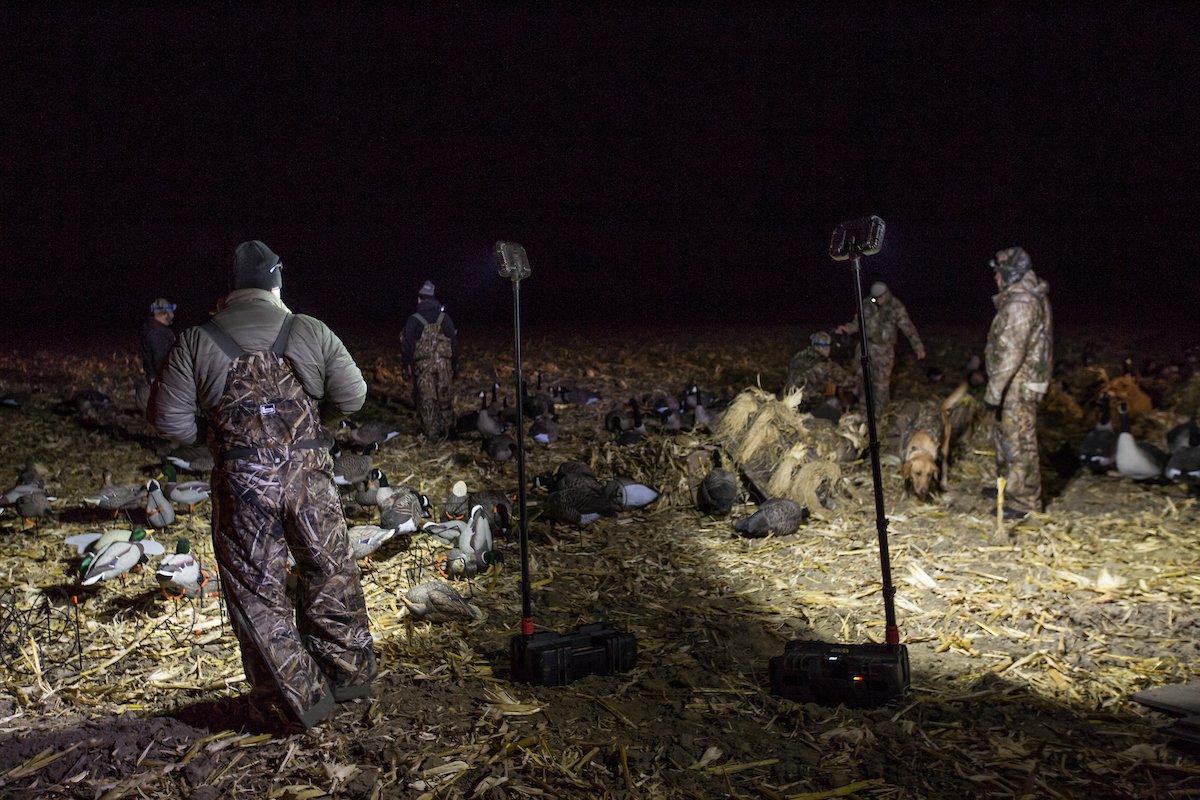A Critical Eye Lets You Set Up Correctly
Most duck and goose hunters react well to problems that hinder success. Honkers picking you out? Find better cover. Ducks landing in the next bay? Move. Birds not finishing? Switch up the dekes.
However, we often observe and attempt to fix trouble spots too late. After all, unless you realize immediately after light that you've missed the X on a wood duck hunt, you're probably done for the morning. And if divers skirt your spread and then mass into a raft 200 yards away, you're pretty much relegated to bird watching the rest of the day.
Don't wait. Try to envision and troubleshoot potential problems before the shooting starts. Sure, you might overthink things now and then, but this proactive approach usually pays dividends, especially with pressured birds or during less-than-ideal conditions.
Setup
It sounds stupid, but make doubly sure you're at the right spot. Seriously, if you're hunting big timber, large water or even new lakes or potholes, it can be easy to set up at the wrong point or just off the X. I once spent an hour wandering around a South Dakota bean field during a blizzard looking for a rock pile.
Mark areas on your GPS to make sure you can retrace your footsteps in the dark. Or at least note readily identifiable landmarks that let you know you're on the mark.
Decoys
Fine-tuning your spread in the dark can get tricky because … well, because it's dark. Hastily tossed decoys end up on their sides or with lines over their backs. Layouts that seemed enticing before dawn might look fake when the sun rises.
Solution: Meticulously place each decoy. Don't throw them. Further, realize that objects usually appear farther away in the dark, so make sure to set your blocks far enough from shore, and space them out adequately. You'll rarely set dekes too far away or too far apart.
When everything's set, review the spread with a spotlight, preferably from the view of approaching birds, not just from the blind or boat. Fix mistakes well before the opening bell.
Dogs
I'm confident your dog remains still, quiet and steady during every hunt. Doesn't everyone's? Well, mine doesn't. Of course, that's a reflection of training mistakes I've committed, but when the game is live, it's too late to kick yourself. If Rover wants to yip or jump in the water, correct him immediately, and use a work-around to solve the problem. Tie his leash to a stake or tree so he cannot bolt until released. Work with him to remain quiet and motionless. Remember, your pooch senses your excitement and feeds off it, so be cool, and remain in charge.
Shooting
Trying to hit swift-flying objects can be tough during perfect conditions. Standing to shoot and bumping your head or catching your shotgun sling on brush makes it exponentially tougher. Practice pre-mounting and mounting your gun at every setup. Make sure no obstructions impede your shots or swing. More important, review your safe zone of fire, especially if you've set up in the dark with a large group. No one needs to have their ears blown out.
Cover
When you double-check your decoys, triple-check your concealment. Cattails, wild rice and other natural cover might appear thick in low light, but ducks and geese will quickly find open areas, shiny spots or anything else unnatural. It's usually best to go somewhat over the top with cover, making sure your field blinds are grassed in or your prairie-slough hide has enough grass or vegetation in front and back of you. When in doubt, go heavier.
Worry Not
Again, don't fret so much about stumbling blocks that you talk yourself out of a good shoot. Just go through your mental checklist and review considerations that might trip you up. Refine your setup until it's as good as possible before shooting, and then stay vigilant if birds react adversely to it. During a season, those tiny details can add up to many more realized opportunities.
Click here for more Realtree waterfowl hunting content. And check us out on Facebook.







